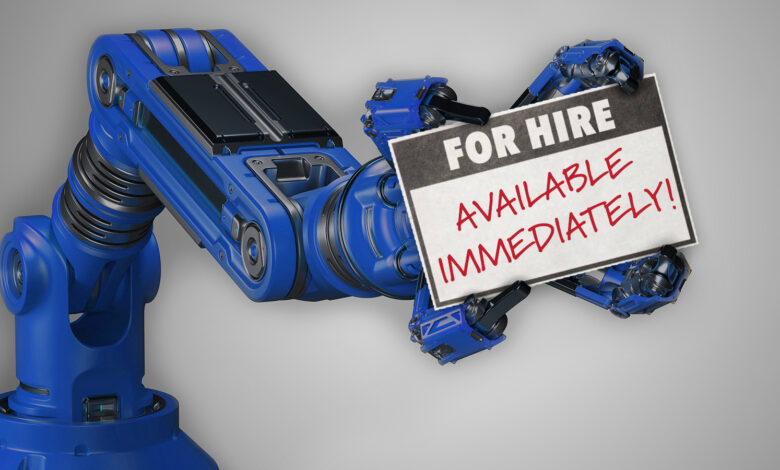
Since 2020, reliable people have been harder to find than reliable machines. The end isn’t in sight, either. It’s forecasted that there will be a labor shortage for the next 2-10 years. While alarming, it’s also exciting to think about the innovation ahead.
Over the past 25+ years, digital and CNC-driven technology development has unknowingly helped prep us for what we’re facing. For example, many manufacturing jobs have seen a shift into machine supervision, robotics, and machine programming duties. We’re in the middle of an automation revolution!
Man and machine
We know machines will never completely replace humans in the workforce (nor do we want them to — yikes). Human employees are the lifeblood of any business. But, in today’s reality, competition for good employees is fierce. It’s tough to attract new employees. It’s also tough to keep your existing crew from being burnt out by increased responsibility — which could cause them to seek employment elsewhere. (And it seems like everyone is hiring, making it easier than ever for good employees to jump ship.)
“Hiring” your new equipment
We encourage you to think of purchasing new equipment, like hiring a new employee. Both equipment and great employees will create efficiencies and boost your bottom line. In both cases, there can be considerable time and dollars spent on researching, negotiating, procuring, installing, utilizing, and maintaining or retaining them. Both man and machine are working for you!
Think about it this way: If you’re budgeting to pay your employee a fixed hourly rate over a specified period of time, shouldn’t you extend that logic to an equipment purchase?
For example, a $50,000 machine may cost you less than $6 an hour when the investment is spread over a 60-month span. (Assuming a 160-hour/month capacity.) You can’t hire a human laborer for less than three times that rate.
Labor shortage solutions & decreasing your labor costs
Toss around these questions:
- Are you struggling to find new, quality employees in this job market?
- Can a machine perform the task at hand as well or better than a human laborer?
- Could new equipment create efficiencies that outweigh investment?
- Would automation free up your employees to do what only a human can do?
If you answered “yes” to any of the above, it might be time to look into automating some of your processes or adding new equipment to your line-up. We encourage you to calculate what the “hourly wage” of that new equipment would be. Then, determine if you could find (and hire) an equally qualified employee at a comparable rate. It’s all about perspective.
This is the formula we use:

*This calculation is an estimate and will vary. Sometimes we add a couple of bucks an hour to cover things like delivery, installation, maintenance, unforeseen expenses, or finance charges.
Take back control
This conversation is unique to each business and situation. Getting your “machine wage” to a point where it optimizes your cash flow, fits within your budget, and minimizes your interest allows you to keep one crucial thing in your control: growing your business.




